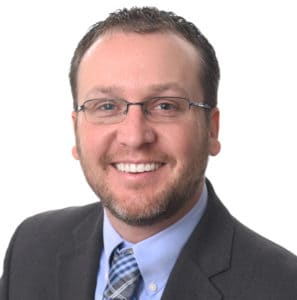
SBA Releases New PPP Loan Forgiveness Application Forms – Including a Borrower-Friendly EZ Option
Disclaimer: This information was correct at the time of publication; however, new guidance from government agencies may be issued at any time, causing some or all of this information to change. Please visit our COVID-19 Business Strategy Hub for the latest news and ensure you are subscribed here to receive email alerts as they are released. We are working diligently to provide the most current information as it becomes available under our COVID-19 Actionable Insights For Businesses Series.
Yesterday morning, June 17, 2020, the Small Business Administration (SBA) released revised Paycheck Protection Program (PPP) loan forgiveness applications. There are now two applications: the revised Form 3508 (long-form) and a new Form 3508EZ (short form). Links to the applications and instructions are below.
The new forms incorporate the changes made by the recently enacted PPP Flexibility Act of 2020, which lengthened the “covered period” to 24-weeks (with an electable 8-week option) and reduced the portion of the forgivable loan amount required to be spent on payroll costs to 60% from 75%. It also added additional full-time equivalent (FTE) reduction requirement safe harbors for an inability to 1) rehire employees, 2) to hire qualified workers for unfilled positions or 3) to return to the level of business activity that existed prior to February 15, 2020.
The new forms also provide clarification, as follows:
- Generally, the new form 3508EZ should be used by businesses that:
- did not reduce employee compensation by more than 25% during their covered period and did not reduce FTEs during their covered period,
- did not reduce employee compensation by more than 25% during their covered period and meets the new business activity safe harbor, or
- self-employed individuals or independent contractors that had no employees.
- The new FTE reduction safe harbor applies to businesses that were unable to operate between February 15, 2020, and the end of their covered period at the same level of business activity as before February 15, 2020, due to requirements established between March 1, 2020, and December 31, 2020, by various governmental agencies. While “business activity” is not defined, we anticipate some form of revenue reduction will be used as a measurement.
- The dates that the original safe harbors put in place to avoid loan forgiveness reductions if employee pay was reinstated or FTEs were restored by December 31, 2020, were further clarified. Those safe harbors can now be applied as of the date of submission of your loan forgiveness application, so if you are taking advantage of those safe harbors, you don’t have to wait until December 31, 2020, to apply.
- It is now clear that the term “owner-employee” includes S corporation shareholders owning more than 2% of the stock of the company and C corporation shareholders. Additionally, owner-employee qualifying payroll costs will be limited to $15,385 for an 8-week covered period or $20,833 for a 24-week covered period, and owner-employee qualifying payroll costs cannot exceed 2.5 months of their 2019 compensation. These limitations were put in place to prevent owner-employees from increasing their pay during the covered period, and therefore increasing their loan forgiveness amount.
- The health insurance costs for self-employed individuals, general partners and owner-employees cannot be included as a qualifying payroll cost since those costs should already be included in their gross compensation (no double counting).
- The retirement contributions for self-employed individuals and general partners should not be included as a qualifying payroll cost since those costs should already be included in their gross compensation (again, no double counting).
- For owner-employees, the qualifying retirement contributions can now be included as payroll costs but may be capped at 2.5 months’ worth of the 2019 contribution amount.
Links to revised SBA PPP forgiveness application forms and instructions can be found below:
- Paycheck Protection Program EZ Loan Forgiveness Application (6-16-2020)
- Paycheck Protection Program EZ Loan Forgiveness Application Instructions for Borrowers (6-16-2020)
- Paycheck Protection Program Loan Forgiveness Application (Revised 6-16-2020)
If you need assistance managing your PPP loan funds, calculating your loan forgiveness amount or completing your PPP loan forgiveness application, the Moore Colson team is available to help. To learn more, visit the COVID-19 Business Services section of our website or contact us. Also, be sure to subscribe here to get our news and alerts as they are released as we are committed to keeping you updated on how to navigate financial challenges associated with the COVID-19 pandemic.

Bert Mills, CPA, is the Managing Partner at Moore Colson. In his role, Bert sets the vision and mission of the Firm and works closely with the Firm's leadership to drive and implement strategies.
Steven Murphy, CPA, is a Partner in Moore Colson’s Tax Services Practice. He is the Practice Leader for the Transportation Industry and also serves as the Tax Practice Leader for the Retail Industry. Steven has over 20 years of experience leading tax engagements and implementing tax strategies.

Tyler Wright, CPA/ABV/CFF, CFE, is a Director in the firm’s Consulting Practice. Drawing on 15 years of experience as an external auditor, internal auditor, and forensic accountant, Tyler provides accounting and financial advice in forensic investigations and commercial disputes.

